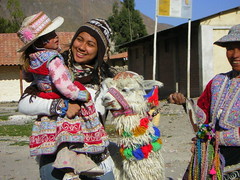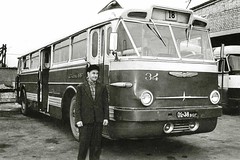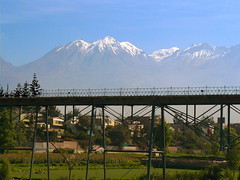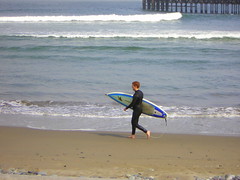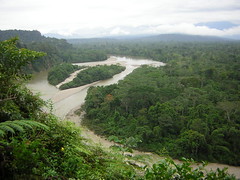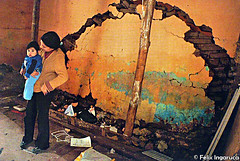Competing with the Bosque de Pomac, in my opinion, as the most interesting place in Lambayeque are the ruins of Zaña. Refreshingly, these ruins are of a different kind to the ones you might be used to seeing while visiting Peru.
Category: "Travel and Places"
Túcume
The Sicán abandoned the old center of their civilisation at Batán Grande and relocated to the current site of Túcume. Built entirely of adobe mud bricks between 1000-1100 AD, the site flourished for nearly a milenia under Sicán, Chimú and Inca rule until the arrival of the Spanish in 1532. Spread over more than 220 hectares, there are 26 enormous pyramids standing in ruins.
Batán Grande – Bosque de Pomac
This incredible place is as interesting as it is beautiful. Baked in hot sun, cut in half by a river that floods the area in the rainy season and dotted with ancient pyramids, this dry forest of algarrobo trees on the old grounds of the Batán Grande suger-cane hacienda was the highlight of my time in Lambayeque.
Museo Nacional Sicán
The museum gets a special mention, not only because like all museums in northern Peru it shames the rest of the country, but also it allowed you to take photos of the artefacts unlike the Sipán museum, also unbelievably excellent.
The Sicán of course, are the pyramid builders who left us Batán Grande and Túcume. This museum exists to display the most important finds of the tonnes uncovered.
The Sicán
Not to be confused with the similarly named archaeological site of Sipán, the Sicán were an ancient civilisation that developed in northern Peru between 800 and 1300 AD. Also known as the Lambayeque culture, they were a people of metal workers and pyramid builders descended from the Moche, with trade connections and influence from peoples in the nearby mountains, rainforest and regions such as modern day Ecuador. Their trade system also gave them access to feathers from the Amazon to the east and lapis lazuli from Chile, far to the south.
Pimentel
A ten minute bus ride from Chiclayo, at about 11km, is the most popular beach in Lambayeque where visitors can enjoy a good climate most of the year. A fishing town part of the year in which locals still uses the millennia-old Caballitos de Totora, it becomes a crowded get-away spot in the warmer months.
Hans Heinrich Brüning
Hans Heinrich Brüning Brookstedt lives on through his museum in the town of Lambayeque in northern Peru. This Peruvian archaeologist of German origin, born in 1848, travelled to Peru in in 1875 to find work on the Pátamo estate.
Señor de Sipán
Peruvian archaeologist Walter Alva made world news in 1987 when he announced the greatest archaeological find since Tutankhamen in Egypt. When the grave of this Moche ruler was discovered, the archaeological community was amazed to find a burial so intact and yet more amazed at the unbelievable quantity of gold that accompanied this man, the Lord of Sipán.
Lambayeque
The town of Lambayeque is the old Spanish colonial city founded in the 1500s that was the centre of power in the region of the same name. It stayed a relatively small town until 1720, when the rich families of the town of Zaña relocated here after Zaña was destroyed in a flash flood.
Chiclayo
Chiclayo is a huge disorganised commercial city that sits on the Panamericana highway. It has a population of over 650,000 in a green (by Peruvian coastal standards) agricultural area with easy access to the mountains. The name of the city probably comes from the Mochic language; Chiclayoc meaning “hanging greenery”.
El Brujo Archaeological Complex
Brujo was one of the most important religious sites of the Moche culture. One of the pyramidal structures found there has beautiful preserved high relief murals, still with original paint – making it one of the most important archaeological sites too.
Huaca Arco Iris
One of the most interesting and often-visited Chimú constructions other than the city of Chan Chan is the Huaca Arco Iris, the rainbow pyramid, otherwise known and the dragon pyramid. This Chimú temple gets these names from the decoration the covers all of it walls



